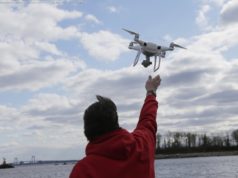Flowing lava from the Kilauea volcano has now reached the Pacific Ocean
LEILANI ESTATES, Hawaii — There is a new health threat tonight on Hawaii’s Big Island. Flowing lava from the Kilauea volcano has now reached the Pacific Ocean, creating a toxic stew.
In a tower of lava, the Big Island’s volcanic beginnings burst again into view. All the molten rock is hotter than a house fire and needs some place to go. From fissure 20, we tracked its flow two miles to where the hot river pours into the Pacific Ocean.
When the lava hits the ocean, it produces a hazard called “laze,” releasing hot steam and hydrochloric acid, which is poisonous and burns on contact. The wind could shift at any time.
Experts warn the laze cloud could travel 15 miles, another worry for emergency officials along with flying “lava bombs” that can weigh as much as refrigerators. One hit a man over the weekend, shattering his shin.
“It’s a worry that people will be injured or killed, sure,” said geologist Dr. Carolyn Parcheta.
Parcheta said Kilauea’s eruption has now evolved beyond what she calls its “throat-clearing phase.”
“I think we’re moving into phase two and that’s where we’re going to see increased activity, potentially higher fountains, more lava flows,” Parcheta said, adding that the lava is spreading the length of two to four football fields an hour.
Over the last month, the Big Island has recorded 3,000 volcano-related earthquakes. Fortunately, most of the active flows keep marching south, away from where more islanders live.
But lava overwhelmed Leilani Estates, the hardest-hit neighborhood, burning and burying more than a dozen homes. About 1,700 people fled, but John Artymovich is a holdout.
“As long as the wind is blowing in the direction it has in the last two weeks, except for one or two days, it’s taking the gas all that way,” Artymovich said.






